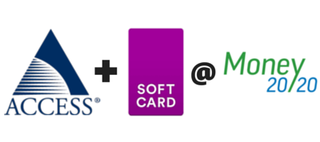Are Mobile Wallets 400% More Difficult to Use than Physical Wallets?
I’m a mobile wallet user, sure. I used it once when my gas tank was nothing but fumes and my physical wallet was nowhere to be found. I used it another time when I reached the checkout line with a load of groceries but was without my physical wallet again.
I’m a huge fan of mobile wallets (when I don’t have my physical wallet)!
In all seriousness, this is the experience of many mobile wallet “users.” Many if not most mobile users have made a payment or two with their phones, but at this point, the ongoing adoption isn’t there.
Could it be that mobile wallets take 60% to 400% more effort to use than leather wallets?
Let me explain.
The High Cost of New Technology
Measuring "interaction costs" is one of the tools User Experience Designers use to decide how usable and user-friendly a product or service is. Interaction cost is simply "the sum of efforts -- mental and physical -- that the users must deploy in interacting with [a product] in order to reach their goals."
To measure the interaction cost of using something--website, can of soda, flux capacitor or mobile wallet--one simply itemizes every mental and physical step that the user must take in order to use the product. Consumers don't itemize interaction costs explicitly, of course, but they do run subconscious calculations.
How many times have you run into a login/sign up page, decided it's not worth the effort and just left the website? You just ran an interaction cost calculation, measured it against your expected return in value and decided that the cost outweighed the return.
Let’s look at an interaction cost breakdown of three recent experiences using a leather wallet and a mobile app wallet.
Leather Wallet
- Pull leather wallet out of pocket
- Open it
- Decide which credit card to use
- Pull out credit card
- Swipe it at terminal
- Notice confirmation of payment on terminal
- Put card back into wallet
- Put wallet back into pocket
Interaction cost: 8 steps
Pretty easy, right? Let’s check out the same transaction with a common mobile wallet:
Mobile Wallet - best-case scenario
- Pull phone out of pocket
- Push button to turn on phone
- Enter code to unlock
- Swipe to the screen with the Mobile Wallet app
- Tap on app
- Wait for it to load
- Enter PIN
- Tap phone on terminal
- Notice green light on terminal
- Notice confirmation message on phone
- Close app
- Turn off screen
- Put phone back in pocket
Interaction cost: 13 steps (63% increase)
I used another mobile wallet solution recently that totaled a whopping 40 steps to reach a completed transaction. It required me to manually turn on NFC as well as a confused cashier, but it resulted in a transaction that was 400% more difficult than simply pulling out a credit card.
*Interaction costs vary by user, based on smartphone configuration and other factors.
Balancing the Value Equation
It's basic human nature that when given two paths that lead to the same goal, we choose the path with the least resistance--the lowest interaction cost. The exception is if one path produces additional value to the individual that the person feels is worth the additional effort/cost.
In the case of my recent experience, there was nothing that added value to the mobile wallet experience. Therefore, the next time I visited the business, I would use a regular credit card and my leather wallet.
So, is there any future for app-style mobile wallets?
Yes, if (and only if) the mobile wallet experience becomes less costly in terms of interaction cost... OR, if it provides additional value that consumers feel justifies the additional cost. Just like any transaction, there has to be a balance between cost and value for the consumer to continue with a behavior.
Additionally, mobile wallet providers should look for ways to add value that will justify the 50% to 400% increase in interaction cost. Ideas include automatic loyalty program tie-ins (tap once to pay and earn rewards in merchant's loyalty program) and merchant discounts.
Neither solution is easy. Integration with every major loyalty program in the country is a multi-million dollar and multi-year endeavor. Contracting with hundreds of thousands of small and large businesses around the country is also a multi-million dollar and multi-year endeavor.
The end result is well worth it: more people reaching for their phones – and your mobile wallet solution - instead of their physical wallets, even in emergency situations.
One mobile wallet adding that extra value to its users is Softcard. Access and Softcard will be presenting together at the Money2020 conference next week. The topic? How exclusive deals from popular merchants are driving adoption and engagement with the Softcard mobile payment solution.
Topics: Customer Engagement, Increasing Cardholder Spending, Mobile Coupons, Payment Card Rewards, mobile wallet adoption, Access Development, softcard, money2020, customer loyalty
Written by: Travis Isaacson
.png?width=596&name=bill_pay-(1).png)






.jpeg)







Share your Comment.